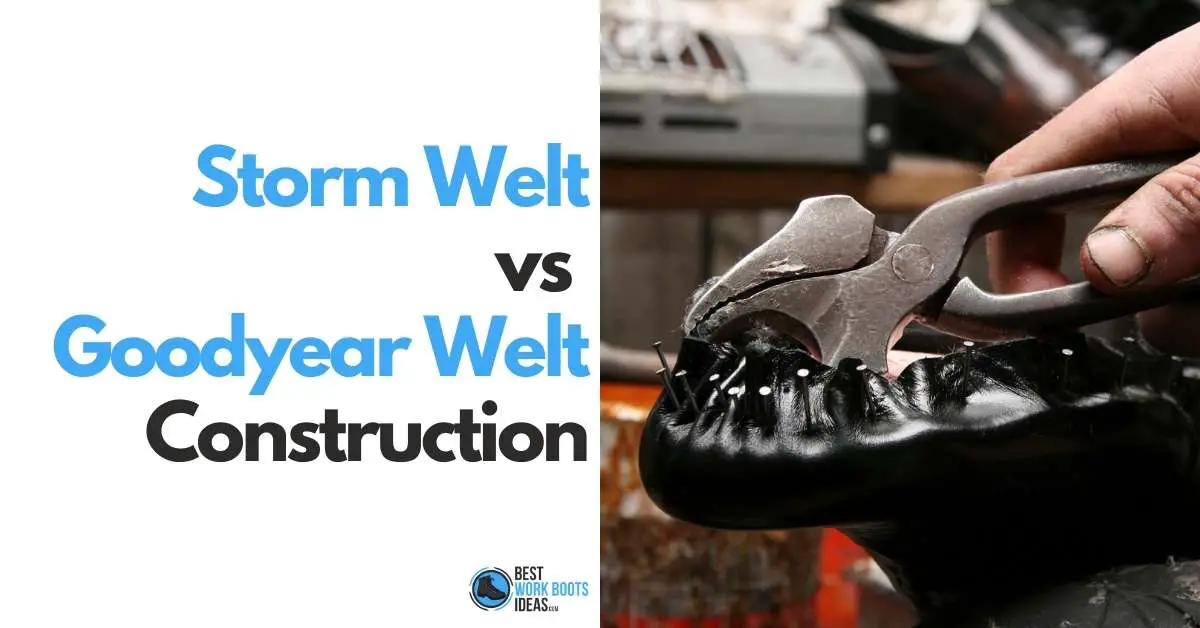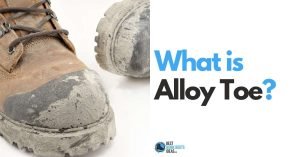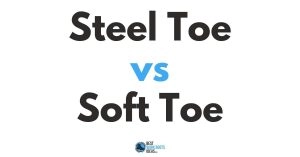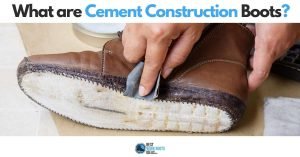Storm Welt vs Goodyear Welt: Get to know your work boot construction styles

Go shopping for a work boot and you will see ads and hear people talking about the different construction methods.
Cement construction, injection molded, bench, a welted shoe.
This list goes on.
It can seem like a lot to learn, but it’s actually not too complicated if you break the learning process into smaller pieces.
With that in mind, I’m going to get into the differences between two shoemaking techniques.
Storm and Goodyear welt construction.
This article should (I’m hoping), help you the next time you need to make a decision on buying safety footwear.
A lot of the information I got on these two styles came from boot manufactures, many of whom are more than happy to demonstrate what their process looks like.
Besides that, I have the non-scientific anecdotes from my friends in the trade that guide my writing in some ways.
I myself never had a pair of welt construction boots.
I always wanted flexibility on my feet and stuck with cement construction boots.
The result was always the same, 9-15 months of excellent use then they’d promptly fall apart.
I guess I got what I paid for.
I’ll continue on with this series, so in the near future there will be articles covering all the different types of boot construction.
This series will allow you to see all the various perks and pitfalls depending on the style you choose.
So to start it off, let’s define what a welt is.
From there we can learn about Goodyear welted construction vs storm welt construction.
What’s in a Welt?
A welt is a rim of material that goes around the perimeter of a boot (or shoe).
It serves as an o-ring/gasket for your boots .
Traditionally made of leather, the welt is the material to which the uppers and soles of your boots are attached to.
It provides stability to your boot at the same time it prevents water from getting in.
For many of us, it’s difficult to discuss the welt, or something being welted, or thick welts, because we don’t have a good visual understanding of what it all means.
I was among the many that didn’t know that both uppers and outsoles were connected to a third material called the welt.
I thought it was uppers connected to the sole and that’s it.
Some boots are made using that method, a blake stitch, but most work boots require a welt.
The advantage welt construction provides is strength and stability.
Unlike boots held together with glue or cement, welt construction doesn’t fail as a result of continued exposure to the elements.
With a cemented shoe, all that needs to happen is for a little portion of the seal to fail.
At that point it’s only a matter of time before the breach spreads and your outsole starts to peel off.
A welted sole doesn’t become substantially weaker if a single stitch fails.
You can also get it repaired, unlike a cemented boot.
This construction allows for the upper to be stitched into the welt, then in a later stage, the welt attached to the outsoles.
Like framing a wall, attached in one place and it’s a little shaky, but continue to attach it all around and it’s suddenly a firm structure you can build other things on to.
This is exactly what’s occurring in welt construction.
Check out how it looks when the welts are stitched to the uppers and insoles.
Once the upper is attached to the welt, it needs to be flattened so it can cleanly be stitched to the outsole .
At that point the entire upper of the shoe can be attached to the outsoles.
You then have a completed boot.
When this is well done, it’s easy to overlook the fact that a connecting piece is even there.
You might hear the prominent stitches in the top of the welt also described as “welts.”
Although this isn’t technically correct, it’s something that’s said enough where it should be noted.
Welt construction provides an excellent moisture barrier that is considered the best protection on the market in terms of design.
At the same time it’s keeping water out, welt construction allows for easy resoling if that’s something that needs to be done.
Goodyear Welt Construction
The welting process was mechanized by Charles Goodyear Jr. in 1869 and has been known as Goodyear Welt construction ever since.
The sturdy and reliable design made it a popular product amongst workers.
This method had been known by cobblers for hundreds of years, but it was tedious and expensive.
Not everyone could afford the cost or time it took to make, nor were all cobblers skilled enough to do it properly.
This was a prime example of the industrial revolution providing the masses a product with levels of quality they would have never been able to afford in earlier years.
I’m not expecting you to watch all 80 minutes of it, but check out a couple minutes of the process of making shoes by hand.
If the whole idea of mechanizing a shoe making process doesn’t seem that amazing before seeing this video, it certainly will afterwards.
Being someone that worked with refinishing furniture and antique doors and windows, I know the amount of effort it takes to trim something even and level… by hand.
It can take ages to do, and the only way to do it quicker is experience.
I got lost watching that video for about 20 minutes as I was mesmerized by watching the cobbler work.
So now when you hear that something is built using Goodyear Welt Construction, you’ll understand that they’re just saying the design used to build the boot.
You may also hear about other types of welt construction, one of them being the storm welt.
Read on.
Storm Welt
I like to think of the storm welt as the super-sized version of the traditional Goodyear Welt.
The storm welt is taller and heartier than it’s forebearer, and better at keeping water out.
The difference is that with a heartier welt comes a heartier stitch. The stitches in storm welts are able to grab a better hold of the welt, upper, and the insole as well.
It is for these reasons that the storm welt is favored by workers in inclement weather conditions.
Yes, plenty of boots with standard welt construction will claim that they are waterproof, and they are, it’s just that storm welt are….more waterproof.
I know that sounds a little funny to say, something’s either waterproof, or it isn’t, right?
Right and wrong.
Just like at the beach, where every sunscreen promises to be sweat and waterproof but some do a better job that others, the storm welt does a better waterproof job than goodyear.
Keep in mind, some people consider the storm welt a form of a Goodyear welt, so you might see boots advertised with a “Storm Goodyear Welt Construction.”
This is not some third type of welt, they’re just talking about a storm welt
Things to Consider About Welt Construction Boots
You might be wondering, if there’s better waterproof protection from a storm welt, why aren’t all welted boots storm welts?
Excellent question and an excellent reason: because it makes the boots heavier and bulkier.
Just as cemented boots are lighter and more flexible than Goodyear Welted boots, Goodyear Welted boots are lighter and more flexible than storm welted ones.
It’s no secret that the more materials you add to a product, the heavier it gets, and with boots there is no exception.
This is yet another instance where you should take a moment to consider what your work requires of you.
As I mentioned in the beginning, I never bought a pair of welted boots as I liked the cheap, light, flexible construction of a cement construction boot.
At the time I was a bit younger, moving quicker, and this is what suited me.
Now that I’m a little older, and not as inclined to dash through a construction site, I would be way more interested in welt construction boots.
I’m not interested in getting a new pair every year, but very much like the idea that I could resole a pair of boots instead of buying a new one.
Welt, That’s All Folks
Hope this clears up any confusion there might be surrounding these two different welts.
I also hope you have a better sense of what a welt is in general. If you want to know more about shoe construction, you may be interested in learning about goodyear welt vs blake stitch.






